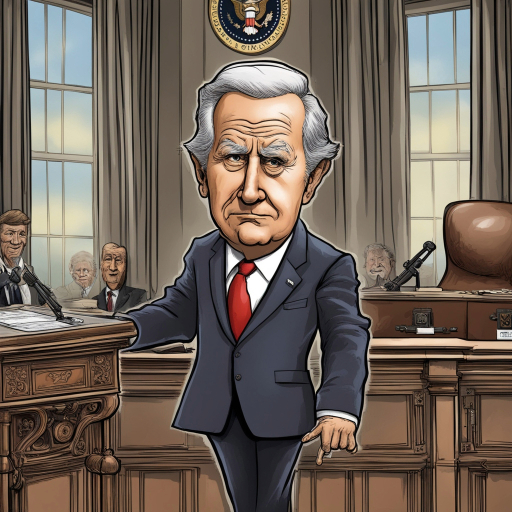In the midst of escalating trade tensions between the United States and China, Chinese social media platforms have begun sharing artificial intelligence (AI) created posts showcasing American figures engaged in factory work. Notably, one of these AI manipulations features US President Trump and Elon Musk working together on the assembly line to produce Nike shoes, a clear play on the ongoing trade disputes.
These AI memes and videos, backed by Chinese media and government representatives, taunt Trump’s ‘Make America Great Again’ catchphrase, and highlight the projected increase in cost of goods either produced in American facilities or imported under stiff tariffs of up to 125%. Trump and Musk, in these digitally contrived scenarios, are seen in work clothes putting together Nike shoes, while other figures like VP JD Vance are visualized assembling iPhones.
Ironically, the AI renderings portray JD Vance in a red hat – noticeably missing the emblematic MAGA acronym – while he works on tech products in blue-collar attire. This interesting twist puts into perspective the potential implications of trade tariffs on the cost and production methods of common goods.
Another manipulated social media post, attributed to the Chinese foreign ministry’s spokesperson Mao Ning, depicts MAGA hats affixed with ‘Made in China’ labels and costing $27 more than their previous selling price. Ning, who is known as former Communist Party Chairman Mao Zedong’s ‘cousin’ by state media, didn’t hesitate to challenge Trump’s hefty tariffs imposed on China.
She sent a resounding message in response to the 104% tariffs that became effective on Wednesday at 12:01 a.m.: ‘We are Chinese. We aren’t scared of confrontations. We hold our own.’ China’s message to the world, veiled in sophisticated AI posts and strong words, effectively represents its stance regarding the trade war.
In a quite creative expression of protest to the trade war, China’s state-owned media organization CGTN published a music video of an AI-generated song that was a remix of Taylor Swift’s ‘Look What You Made Me Do,’ renamed ‘Look What You Taxed Us Through.’ This clever adaptation underscores China’s resilience and sense of humor amid rising trade tensions.
Last Wednesday, in the wake of an intense selloff in the Treasury bond market, Trump hit the pause button on all other reciprocal tariffs on US trading partners for a duration of 90 days. Yet, he maintained a fundamental 10% global import duty, subsequently hinting at even steeper fines on China.
Trump’s assault on the Chinese economy took the form of a 125% tariff which, combined with a further 20% ‘fentanyl tariff’ from earlier, translated to a total of 145% duties on numerous goods imported from China. This aggressive tariff policy sent US markets into a flurry, with particular surges in the S&P 500 and Nasdaq.
Despite swift fluctuations in the market, Trump’s stance remained firm, as he expressed his confidence in the US’s current tariff policy on his Truth Social platform, declaring, ‘We are doing really well on our TARIFF POLICY. Very exciting for America, and the World!!! It is moving along quickly.’
The US’s import profile prominently features China. Despite Trump’s first-term trade actions redirecting some production to neighboring countries like Vietnam, Indonesia, Cambodia, and India, the US purchases more from China than any other country except Mexico, thereby cementing China’s role in the global supply chain.
The Footwear Distributors and Retailers of America statistics report that Vietnam is currently the world’s leading manufacturer of Nike shoes — nearly a third of all shoe imports to the USA in 2023 came from this country. However, the lion’s share of footwear still reaches US shores from China.
Interestingly, major American corporations have so far refrained from announcing a switch in their production centers back to the US. Despite rising tariffs, China remains a vital partner for the US’s digital, footwear, textile, and apparel sectors according to recent data from the US International Trade Commission.
The US-China trade figures for 2024 are telling. The total trade value stood at $582.4 billion, with US exports to China amounting to $143.5 billion and imports reaching $438.9 billion. This led to a substantial trade deficit of $295.4 billion, according to the Office of the US Trade Representative.
In response to the updated tariff policy, China’s Commerce Ministry has pledged to resist to the last. The ministry’s Thursday statement read, ‘The countermeasures China has taken are aimed at safeguarding its sovereignty, security and development interests, and maintaining the normal international trade order. They are completely legitimate.’ The statement stressed that China’s resolve won’t waver, even in the face of escalating tariff threats by the US.

